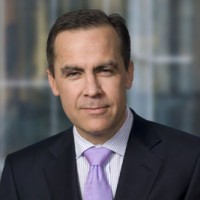
The mean pay gap, calculated by the difference between average hourly earnings of men and women, found that women earned 21.0% less in terms of hourly pay, and 23.6% less in bonuses.
On a different measure – the median pay gap, calculated by lining all salaries in order from lowest to highest, picking the middle-most salary and comparing the difference between the midpoints between men and women – found that women earned 24.2% less than their male counterparts in hourly pay, and 25.6% less in bonuses.
In comparison, the national gender pay gap on a median calculation was 9.1% in the year to April 2017.
Senior roles
Mark Carney, BoE governor, attributed the pay gap to the lack of women in its senior ranks: “We’re confident that men and women are paid equally for doing the same job at the Bank; however, the greater proportion of men than women in senior roles creates a gender pay gap.”
Indeed, Carney and all four deputy governors of the BoE are men; of the nine people in the Monetary Policy Committee, there is one woman, and men make up the entirety of the 11 members of the Financial Policy Committee.
While female representation at the senior management level at the BoE has increased from 20% in 2014 to 30% in 2017, the bank acknowledged that there is still “much to do to ensure we have a sufficient pipeline of female staff in our senior management team”.
The objective is to reach 35% female representation in senior roles by 2020, with ‘senior’ defined as roles ranging from head of department up to executive director.
The report is released as Nicky Morgan, Treasury Select Committee chair, said that the BoE needed to improve representation at its senior levels, and said the Treasury should make “all efforts” to provide a diverse pool of candidates for the BoE’s policy committees – with the Treasury saying it would refuse to endorse appointments if diversity needs are not adequately addressed.
To improve the gender imbalance, the BoE has made efforts to include diverse shortlists and interview panels, offer flexible working, provide unconscious bias training, as well as “fostering an inclusive culture”.
Commenting on the report, Joanna Place, chief operating officer at the BoE, said: ‘To pursue our mission of maintaining monetary and financial stability for the good of the people of the United Kingdom we must reflect the diversity of the people we serve.”
“We have made good progress in building a more diverse and inclusive workplace since first setting targets in 2014,” Place continued, “but we recognise we still have more to do.”
“Addressing the disparity in gender representation at senior levels will take time, but it will help close the current gender pay gap at the Bank,” added Carney.















